The 14th International Particle Accelerator Conference (IPAC’23 https://www.ipac23.org/) was held in Venice, Italy from 7 to 12 May 2023 at the Venice Convention Centre, as a fully in-person event. The impressive venue was located on the Lido in the prestigious area recognized worldwide as the setting for the annual “Venice International Film Festival”. IPAC’23 was jointly organized by the accelerator communities in Europe, Americas and Asia and hosted by Istituto Nazionale di Fisica Nucleare and Elettra Sincrotrone Trieste.
Over 1600 delegates from 37 countries, and 121 industrial partners gathered to discuss the latest advances in accelerator science through an intense programme of talks and poster sessions together with an industry exhibition.
The Cockcroft Institute (CI) was once again well represented at this main international event for the worldwide particle accelerator field and industry. Several CI experts contributed to the scientific program with talks, as session chairs and dozens of poster contributions. CI presented two invited talks, two contributed talks and an outreach talk.
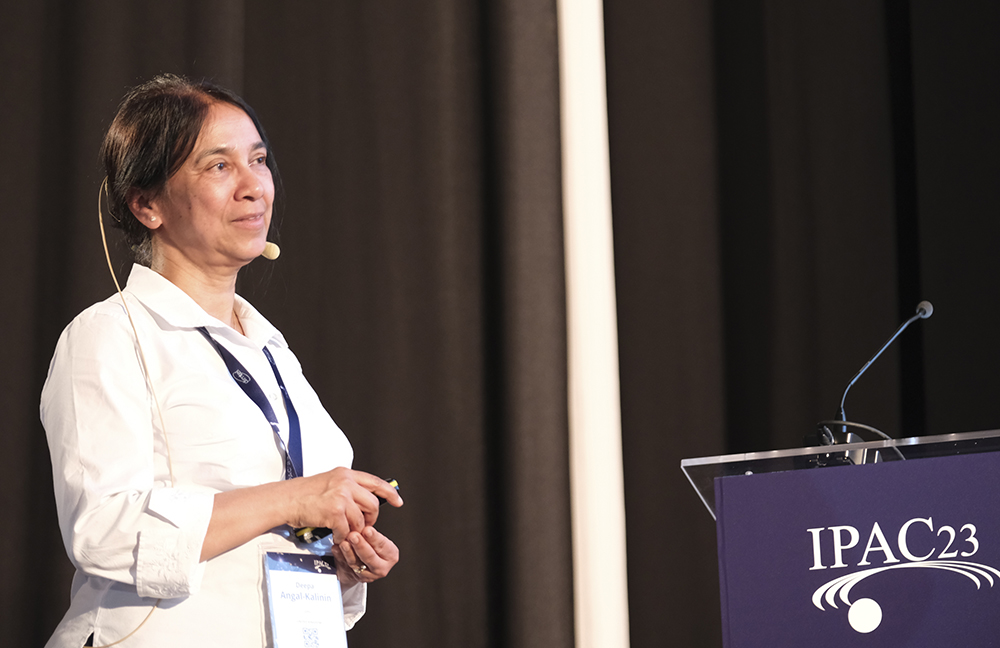
Deepa Angal-Kalinin’s (STFC) invited talk, ‘Electron beam test facilities for novel applications’ (MOZG1), reviewed beam dynamics challenges at single pass accelerator test facilities in Europe to generate, transport and tailor low- to medium-energy high brightness electron beams for a range of novel applications.
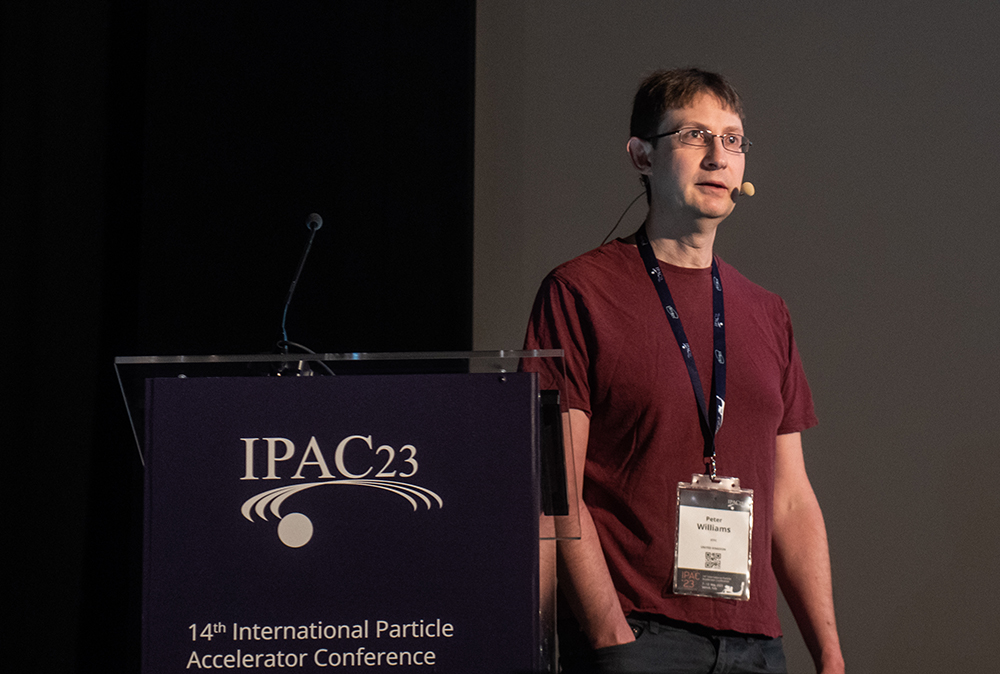
Peter Williams (STFC) presented an invited talk ‘Prospects for future facilities based on energy recovery linacs’ (FRXG1). The talk explored contemporary theoretical and experimental progress in ERLs, discussed the ongoing technical challenges, and presented the community roadmaps toward deployment of ERLs in facilities globally.
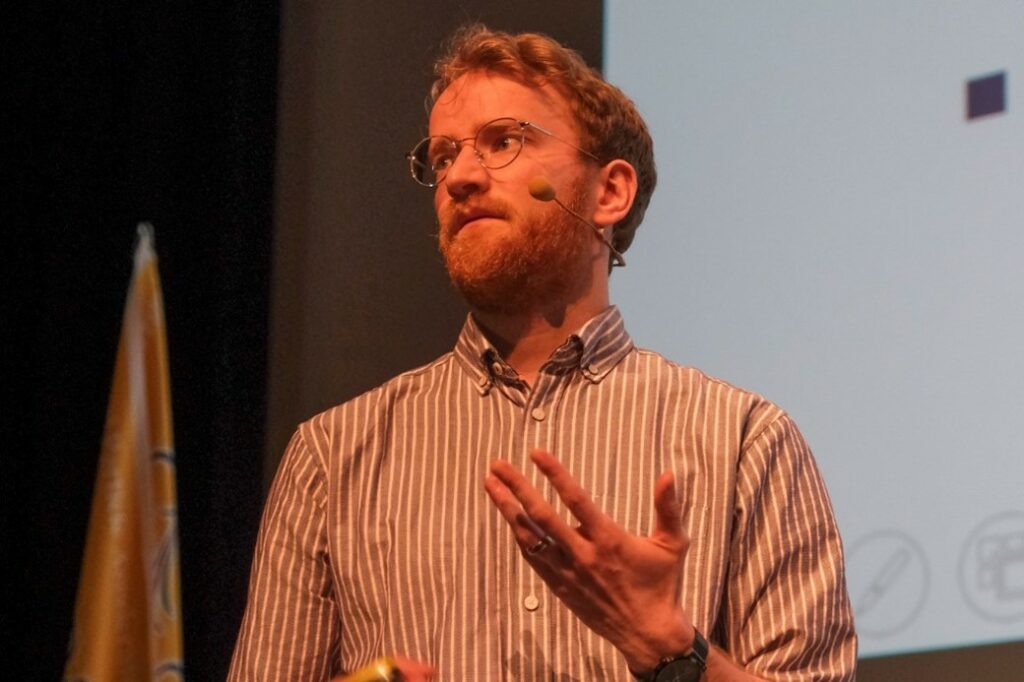
Thomas Pacey (STFC) presented ‘Recent experimental results from the dielectric wakefield acceleration program at CLARA facility’ (TUODB1). The talk discussed the important of understanding transverse wakefields in novel dielectric wakefield acceleration structures. This has potential implications for the efficiency of future high gradient accelerators based on this technology.
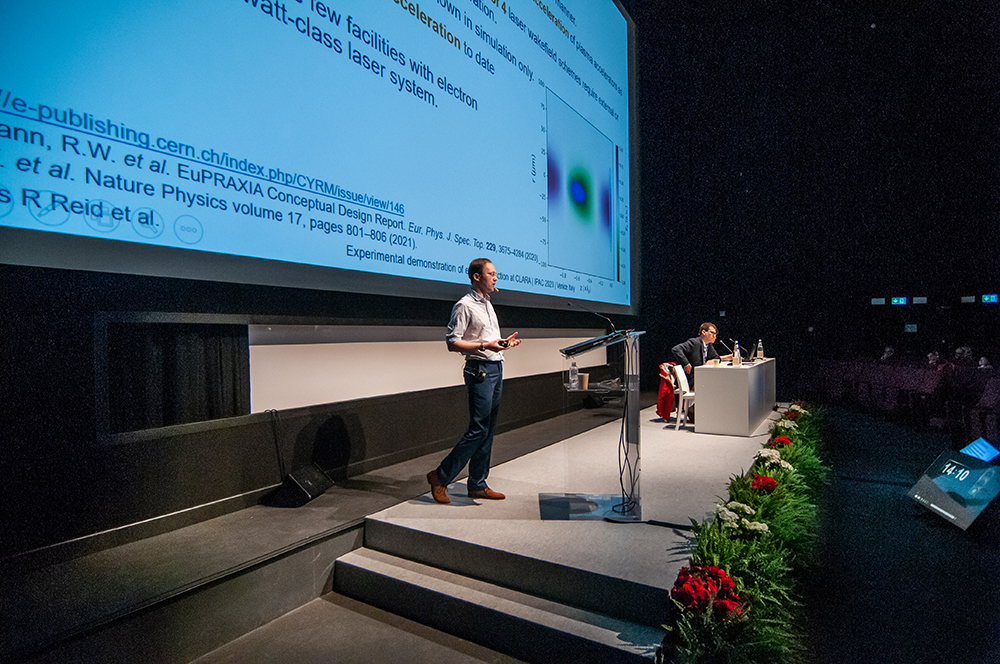
Lewis Reid (University of Liverpool) contributed a talk on ‘Acceleration of electrons from a linear accelerator by a laser driven plasma wave at CLARA’. He presented results of an experiment performed at the CLARA accelerator at Daresbury Laboratory investigating the external injection of the 35 MeV, 20 pC electron beam containing from the linac into a laser driven plasma wave with accelerating gradient ~100 MV/m (THODA3).
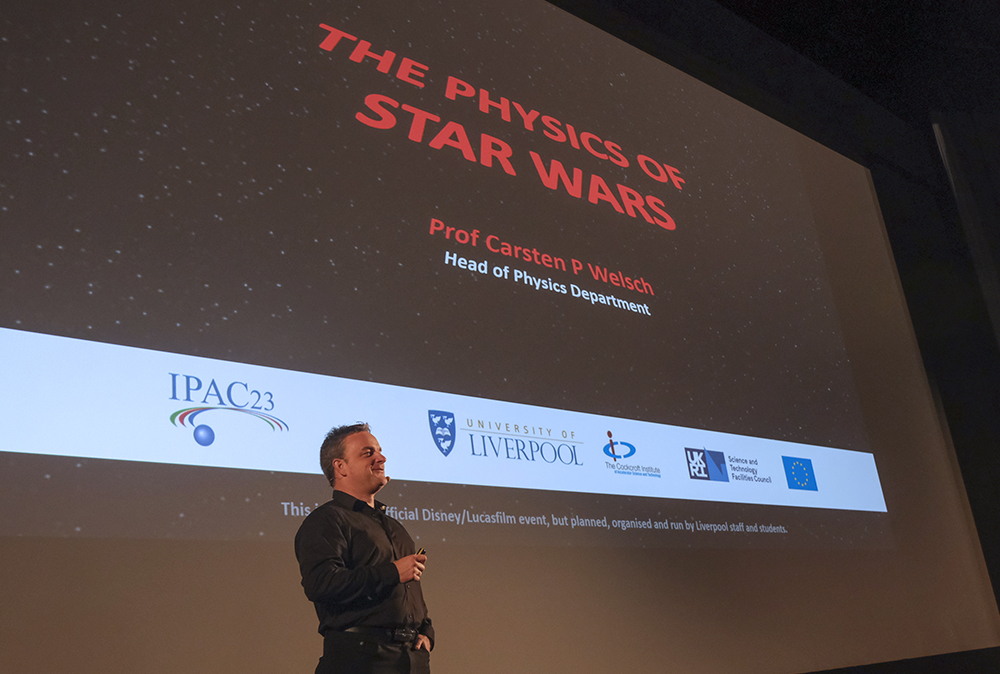
Carsten P Welsch (University of Liverpool) was selected as a panel member for the Industry Session. His talk discussed the challenges of setting up a spin-out company using the example of the company D-BEAM Ltd (www.d-beam.org), which was one of the first companies to join the STFC CERN Business Incubation Centre (BIC https://www.cernbic.stfc.ac.uk/) at Sci-Tech Daresbury. He also presented ideas of how to successfully engage with funders and research partners. On Thursday morning Carsten presented a well-attended outreach talk on ‘The Physics of Star Wars’ which was accompanied by laughter, cheering and applause from the audience.
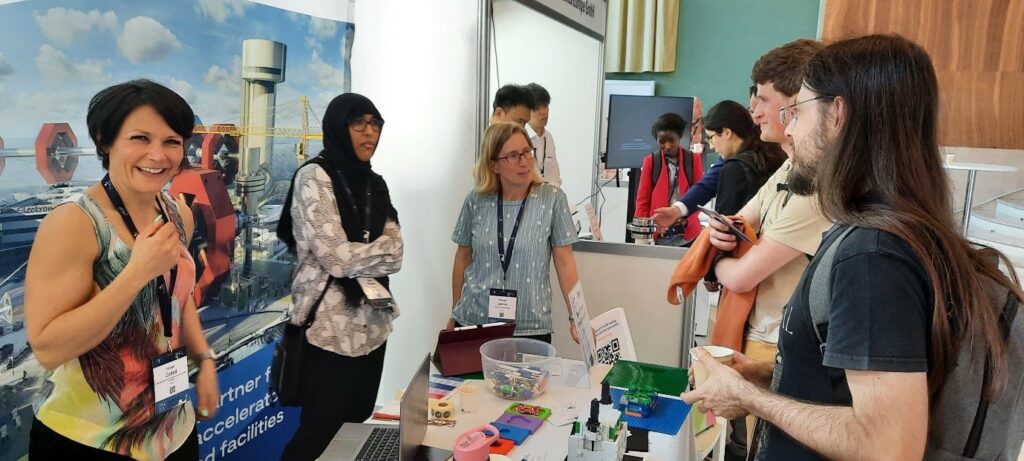
Daresbury Laboratory had a stand at IPAC’23 representing ASTeC and the Cockcroft Institute. The stand was used to raise the profile of Daresbury Laboratory and publicise ZEPTO magnets, our radiation test facilities and Cockcroft research capabilities.
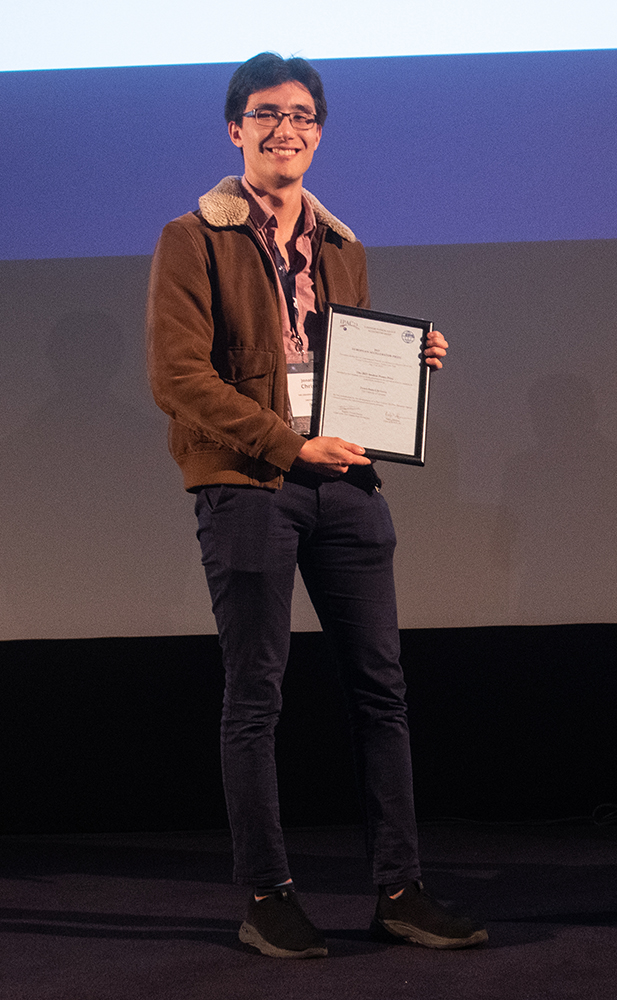
Congratulations also to Jonathan Christie (University of Liverpool) who won the Student Poster Prize for his poster on ‘Developing a two-colour all-fibre balanced optical cross-correlator for Sub-Femtosecond Synchronisation’. Jonathan is supervised by Laura Corner (University of Liverpool), James Henderson and Edward Sneddon (STFC).
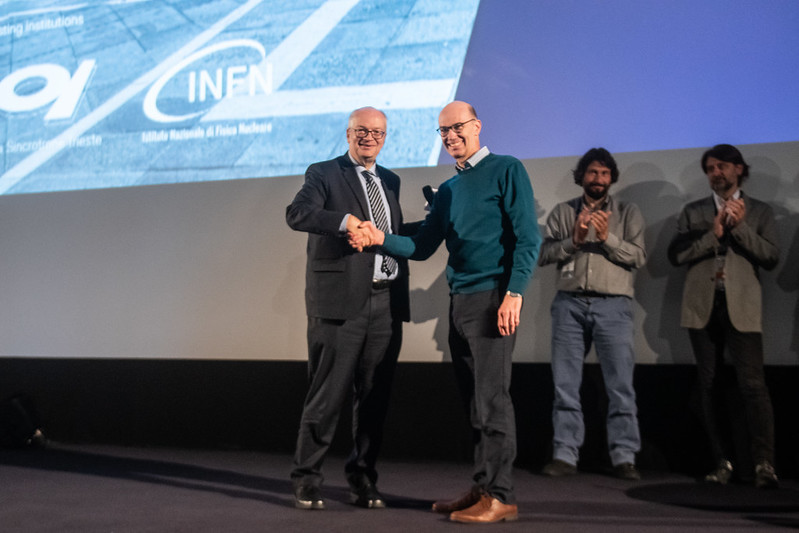
Jim Clarke (STFC) was strongly involved in the planning of IPAC’23 as a member of the European Physical Society Accelerator Group (EPS-AG) prize committee and responsible for student grant allocations, and Peter McIntosh (STFC) acted as Scientific Programme Committee Chair and will take over the role as International Organising Committee (IOC) Chair from Ralph Assmann (DESY) for the upcoming European IPAC’26 in Deauville, France.
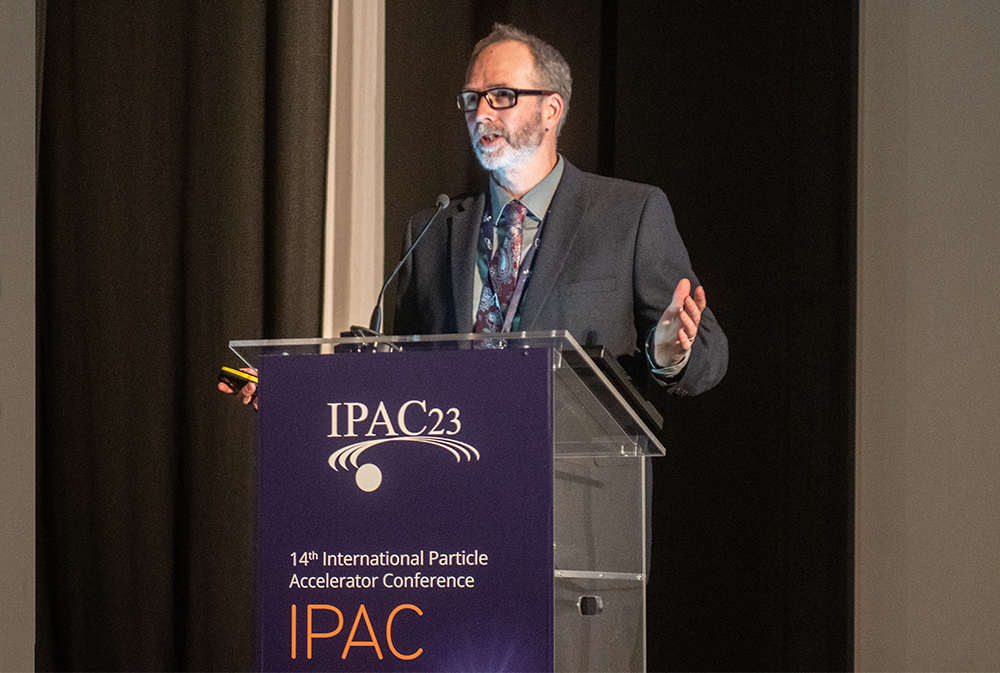
Thank you to all members of the Cockcroft Institute who contributed to the preparation, review and presentation of the R&D at the Institute.
